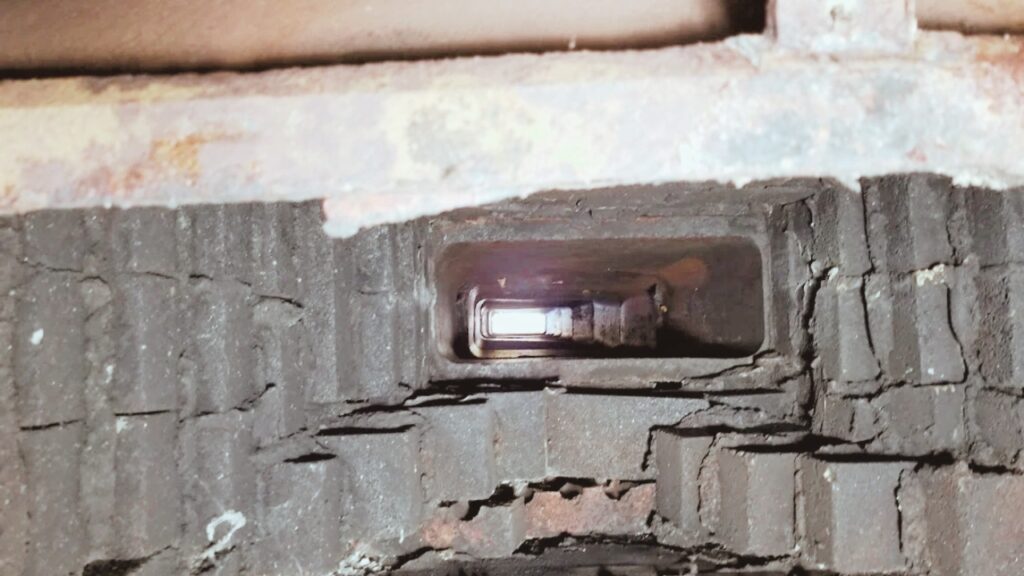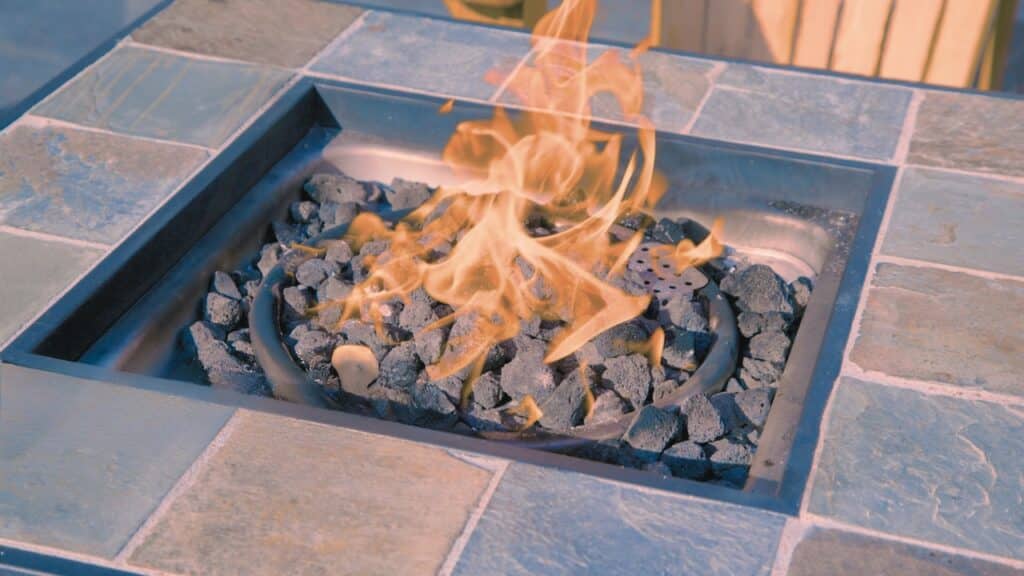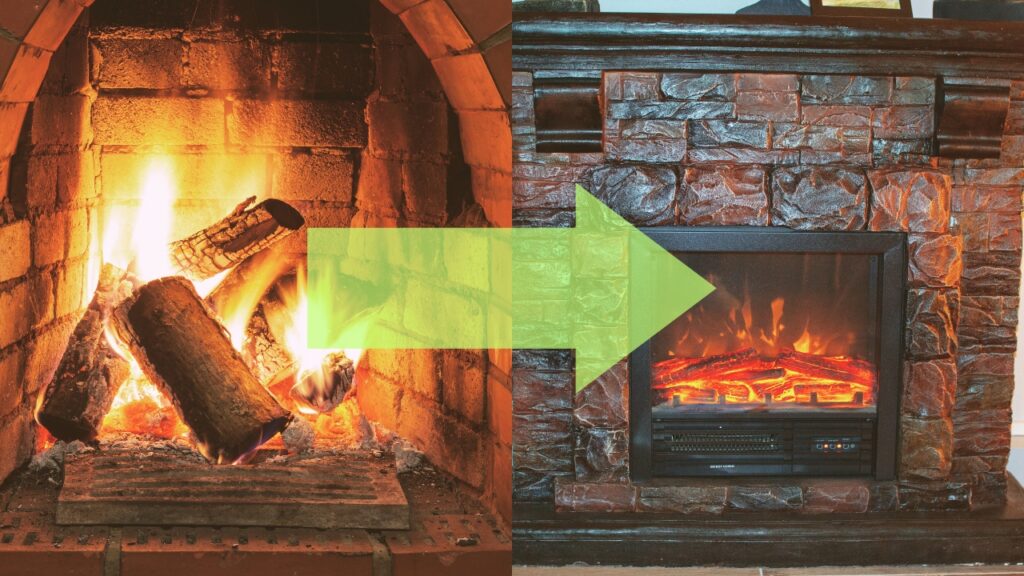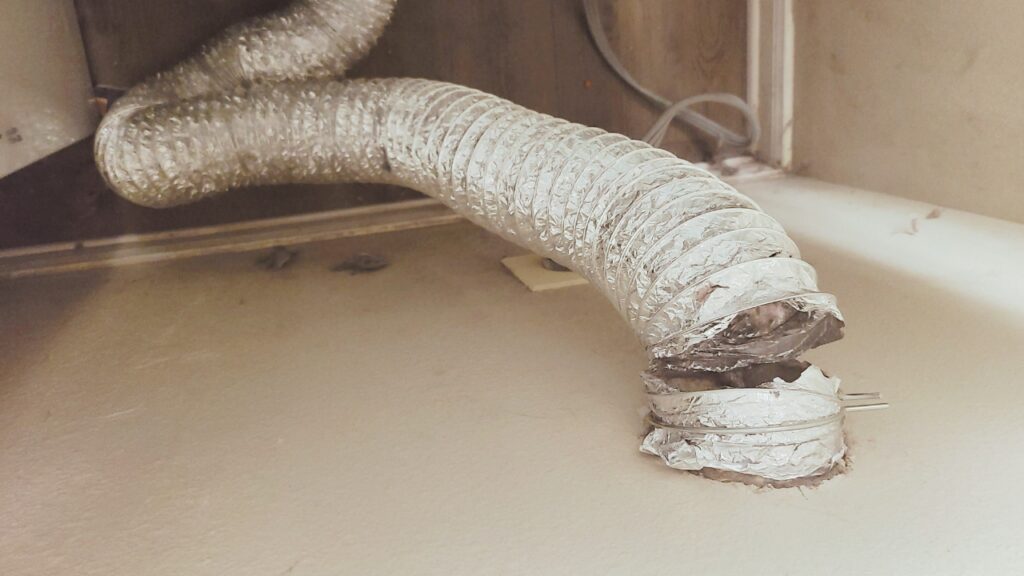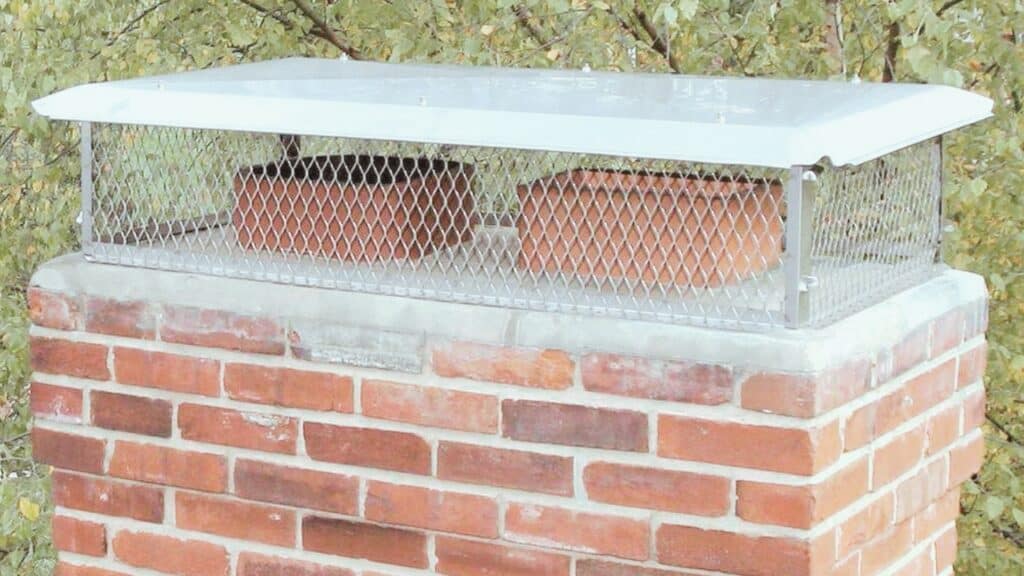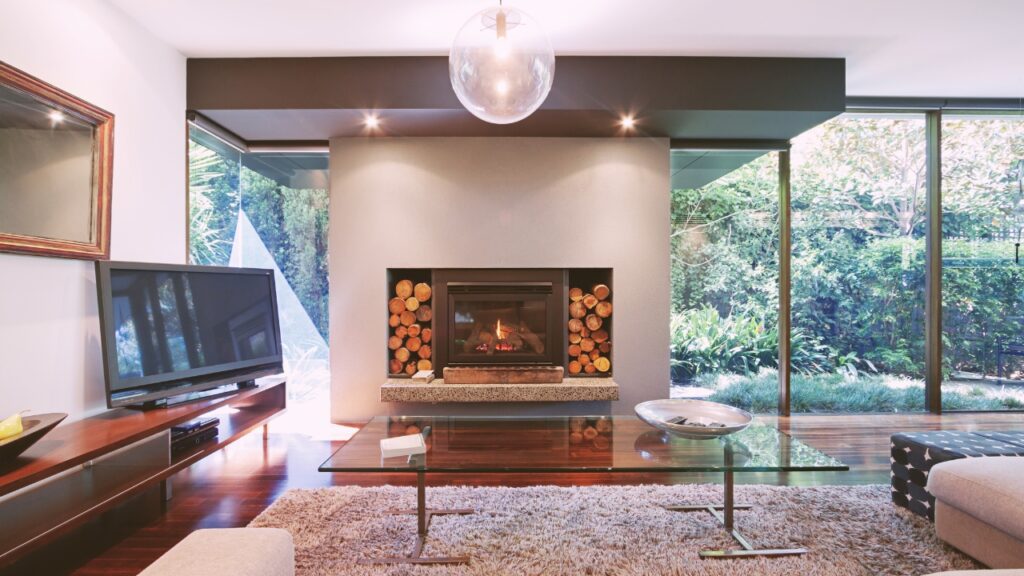Unfortunately, not many people know what to do with bees in unused chimneys. Even worse, only a few homeowners discover that they have bees in an unused chimney. As a result, the bees often go unnoticed until they become a real problem.
It’s a bad situation, and it happens to many homeowners year after year. This isn’t good since wax and honey are fire hazards. If you have a bee’s nest in your chimney, it’s crucial to take action as soon as possible.
Note that they won’t leave willingly from your property, and you’ll likely need to call in a professional to have them removed. This guide will give you information on what to do if you have bees in your unused chimney.
Why Do Bees Come Down the Chimney?
The top of the chimney is where most bee infestations begin. If the top of the chimney isn’t in good condition, it might provide many nesting sites for bees and other pests to enter.
Preventative treatments include replacing your chimney cap or adding a top-sealing damper. You may also try contacting pest control services. Besides that, bees are often found in chimneys during the warm summer months.
Here are more reasons why bees come down the chimney:
1. Bees Seeking a Safe Place to Make Their Hives
It’s natural for bees to want to build their hives in a safe place away from predators. Unfortunately, your chimney might be the perfect spot for them to build their homes.
2. The Chimney is a Perfect Place to Store Food
Bees are always looking for new places to store food, and the unused chimney provides an ideal location.
The bees can easily access the chimney from the outside, and they can keep their food in the crevices of the chimney.
3. A Nectar or Pollen Available in Your Chimney
There might be a nectar or pollen source inside the chimney that attracts the bees. Once they find this food source, they’ll keep returning for more.
4. The Warmth of the Chimney
The warmth of the unused chimney is another reason your chimney might attract bees. They’re seeking a place to escape the cold weather, and your chimney provides the perfect refuge.
5. Smoke from Fires Can Drive Bees Away from Their Natural Homes
Another potential reason for bees in your unused chimney is that smoke from fires can drive them away from their natural homes.
If there’s a lot of smoke in the area, the bees will seek refuge in the chimney.
When you find bees or insects in your chimney, it’s crucial to contact professional services. It can be dangerous to remove them yourself, especially if you or someone from your family is allergic to bee stings.
A professional will have the necessary equipment and experience to remove the bees without putting anyone in danger. They’ll also be able to take steps to prevent them from returning in the future.
——
Do You Need to Hire Chimney & Fireplace Expert?
Get free quotes from qualified experts near you. No commitment required!
——
How Long Will Bees Stay in the Chimney?
Bees might hang around your chimney for about one or two years, depending on the species. This is because some species can create temporary hives that they only use for a short time
.Other species will build long-term hives that can last for several years. Once the bees have established their hive in your chimney, it can be challenging to get them to leave.
The Dangers of Having Bees in Unused Chimney
While bees are essential for pollinating crops and are seen as harmless creatures by many, they can still cause problems for homeowners.
Here are some of the dangers of having bees in your unused chimney:
Bees Can Be a Fire Hazard
Beeswax and honey are highly flammable, and a bee’s nest can easily ignite if there’s a fire in the fireplace. Therefore, it’s essential to schedule a fireplace inspection to ensure no bee nests inside.
Blocked Chimney Flue
When bees build their nests in a chimney, they can block the chimney flue and cause deadly carbon monoxide inside the home.
Moreover, a bee infestation in an unused chimney can lead to propolis. Propolis is a beeswax and resin mixture which seals the hive and protects the bees from infection.
If your chimney propolis blocks your chimney, removing it can be difficult without damaging the chimney. This can lead to costly repairs.
Bee Stings are Dangerous
Bee stings can be fatal for some people, especially those with allergies. This means if you have bees in your chimney, anyone in the house is at risk of being stung.
Infestation Can Spread
Once bees have infested your chimney, they can spread to other parts of the house. This is because bees are attracted to light and heat, which means they’ll be drawn to windows and doors.
If you think you might have a bee problem in your chimney, it’s essential to contact a professional Beekeeper or Pest Control specialist. Ignoring the problem can lead to severe consequences for your home and family.
How Do I Get Rid of Bees in My Chimney? A Step-by-Step Guide

Understanding how to deal with bees in unused chimneys can be a challenging task, often best left to professionals. They will be able to safely remove the bees and their hive without causing any damage to your home or these crucial pollinators.
However, if you find yourself inclined to handle the situation personally, here’s a step-by-step guide to assist you with the process
Step 1: Stop the Bees from Entering Your Home
The first line of defense against bees infesting an unused chimney is to ensure the top of your chimney is in prime condition. Start by replacing the chimney cap or installing a top-sealing damper, if needed. This will not only maintain the chimney’s integrity but also effectively prevent bees and other pests from entering.
Bees are particularly attracted to unused chimneys as they provide shelter, protection from predators, and adequate space for hive expansion. If bees have already gained access, consider sealing the damper tightly and covering the chimney opening with a robust, heavy-duty material like a cloth or tarp.
For enhanced security, a chimney balloon can be employed. This device effectively blocks the chimney, further restricting bees’ access and reducing the likelihood of future infestations.
Step 2: Destroy the Bee Hive
The best time to destroy the beehive is at night when all the bees are inside or afternoon when most of the bees are out foraging.
Use a chimney-safe insecticide or soapy water to kill the bees and their hive. You’ll have to repeat the process a few times to make sure you’ve killed all the bees.
Most importantly, wear protective clothing when destroying the hive, as bee stings can be dangerous.
Step 3: Remove the Bee Hive
Once you’re sure all the bees are dead, you can remove the hive from your chimney. Use a vacuum cleaner with a long hose attachment to suck up the hive.
Alternatively, you can scrape it off with a putty knife. Dispose of the hive in a plastic bag and seal it tightly.
Step 4: Prevent Future Infestations
Once you’ve removed the beehive, take measures to prevent future infestations. Have your chimney regularly inspected and cleaned to ensure no nests inside.
You can also purchase a chimney cap or screen to keep bees out.
If you follow these steps, you should be able to get rid of the bees in your unused chimney. However, if you’re unsure or the infestation is too large, it’s always best to contact a professional.
Bonus Tip: Don’t try to burn or smoke the bees out of your chimney. Remember, beeswax is highly flammable and can burn as efficiently as oil. This puts your home at risk of a fire.
——
Do You Need to Hire Chimney & Fireplace Expert?
Get free quotes from qualified experts near you. No commitment required!
——
How to Prevent Bees from Nesting in My Chimney?
The best way to prevent bees from nesting in your chimney is to have it regularly inspected and cleaned. This will remove any existing nests and make them less appealing to bees.
You can also take measures to keep bees out of your chimney, such as:
1. Seal Cracks and Openings
Bees can enter your chimney through cracks and openings. Inspect your chimney regularly and seal any cracks or gaps you find.
2. Install Protective Screening
Installing protective screening over your chimney will deter bees from nesting inside. You can buy a screen at a hardware store or make your own using metal mesh.
Ensure the screen is fine enough to keep bees out but not so fine that it will block the airflow needed for your fireplace to work correctly.
3. Routine Maintenance with a Professional Chimney Sweep
Getting your chimney regularly cleaned and serviced by a professional will help prevent bees from nesting inside. They will remove any existing nests and ensure the chimney is in good working order.
4. Contact a Local Beekeeper Specialist for Advice and Assistance
If you’re having problems with bees in your chimney, it’s best to contact a local beekeeper or pest control specialist. They will be able to advise you on the best course of action and help get rid of the bees safely.
5. Let the Bees Be (If they aren’t causing any problems)
If the bees in your chimney aren’t causing any problems, you may want to leave them be. Bees are essential pollinators and are currently in decline. By leaving them alone, you’ll be helping to preserve these vital creatures.
However, if the bees are causing problems or you are not comfortable with them living in your chimney, you can follow the steps above or contact a professional chimney sweep service to get rid of them.
How Much Does It Cost to Remove Bees From Chimneys?
It will cost you $200 to $1,500 to remove bees from your chimney. The price will depend on the size and location of the hive and whether you hire a professional or do it yourself.
The following tables break down the cost of bee removal by bee species and project range:
Bee Removal By Project Range
| Project Range | Average Removal Cost |
| Low or simple bee nest removal | Prices can start as low as $80 per project |
| Average or initial inspection bee nest removal | The prices here start from $550 or higher |
| High-end bee nest removal, which usually consists of large colonies | $1,500 or higher |
Bee Removal by Type of Species
| Bee Species | Removal Cost |
| Bumble Bee | $80 to $200 |
| Carpenter Bee | $100 to $2,500 |
| Honey Bee | $100 to $1,000 |
| Killer Bee | $150 to $800 |
Conclusion
While most people consider bees harmless creatures, they can pose a severe threat if they decide to build a hive in your chimney. Not only can bees cause damage to your chimney, but they can also be dangerous if they sting you.
If you find bees in unused chimneys, preventing them from quickly causing further damage or harm is crucial. The best way to remove bees from a chimney is to hire a professional. However, if you’re comfortable doing it yourself, you can follow the steps outlined in this article.
Remember, it’s always best to contact a professional if you’re unsure or if the infestation is too large. They will be able to safely and effectively remove the bees from your chimney.

